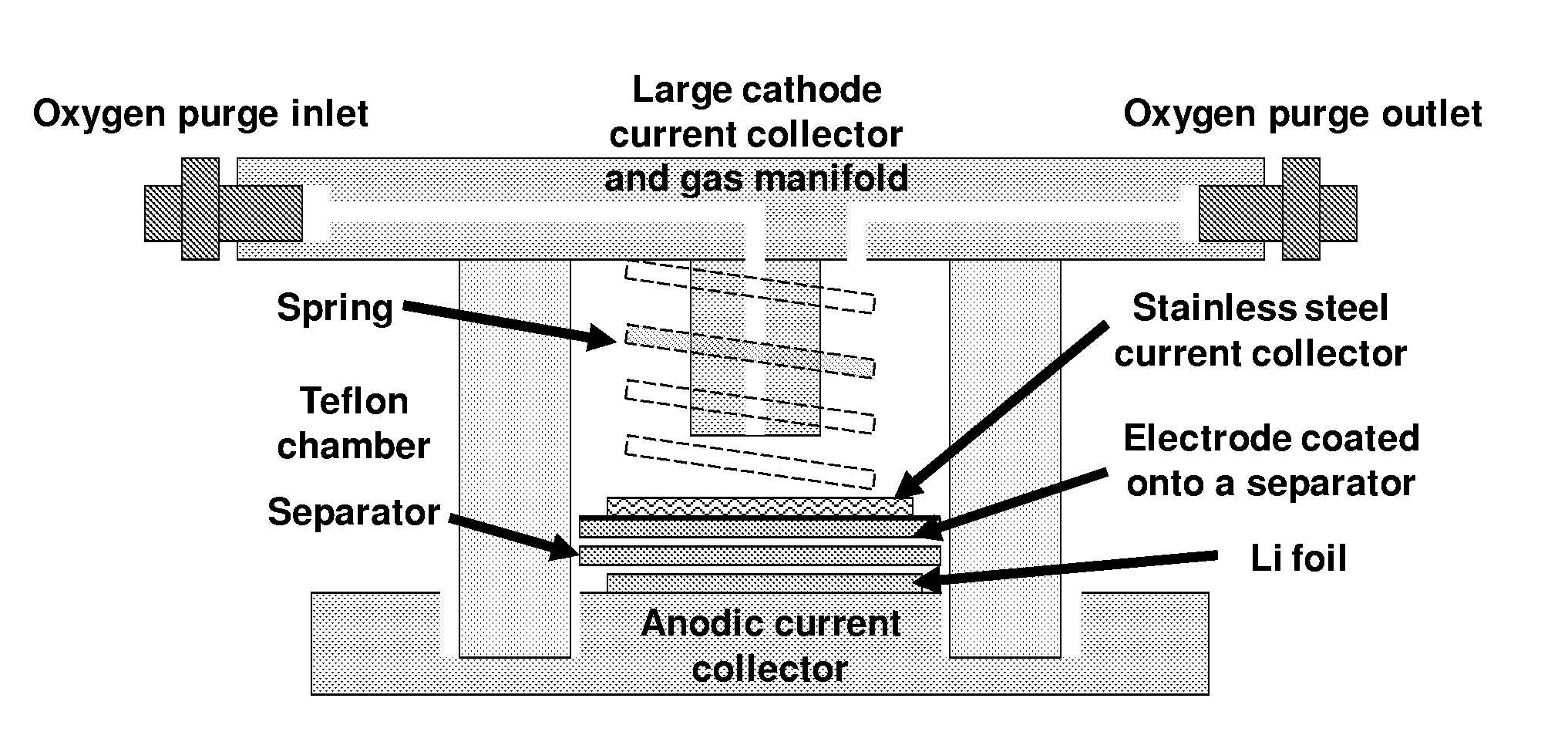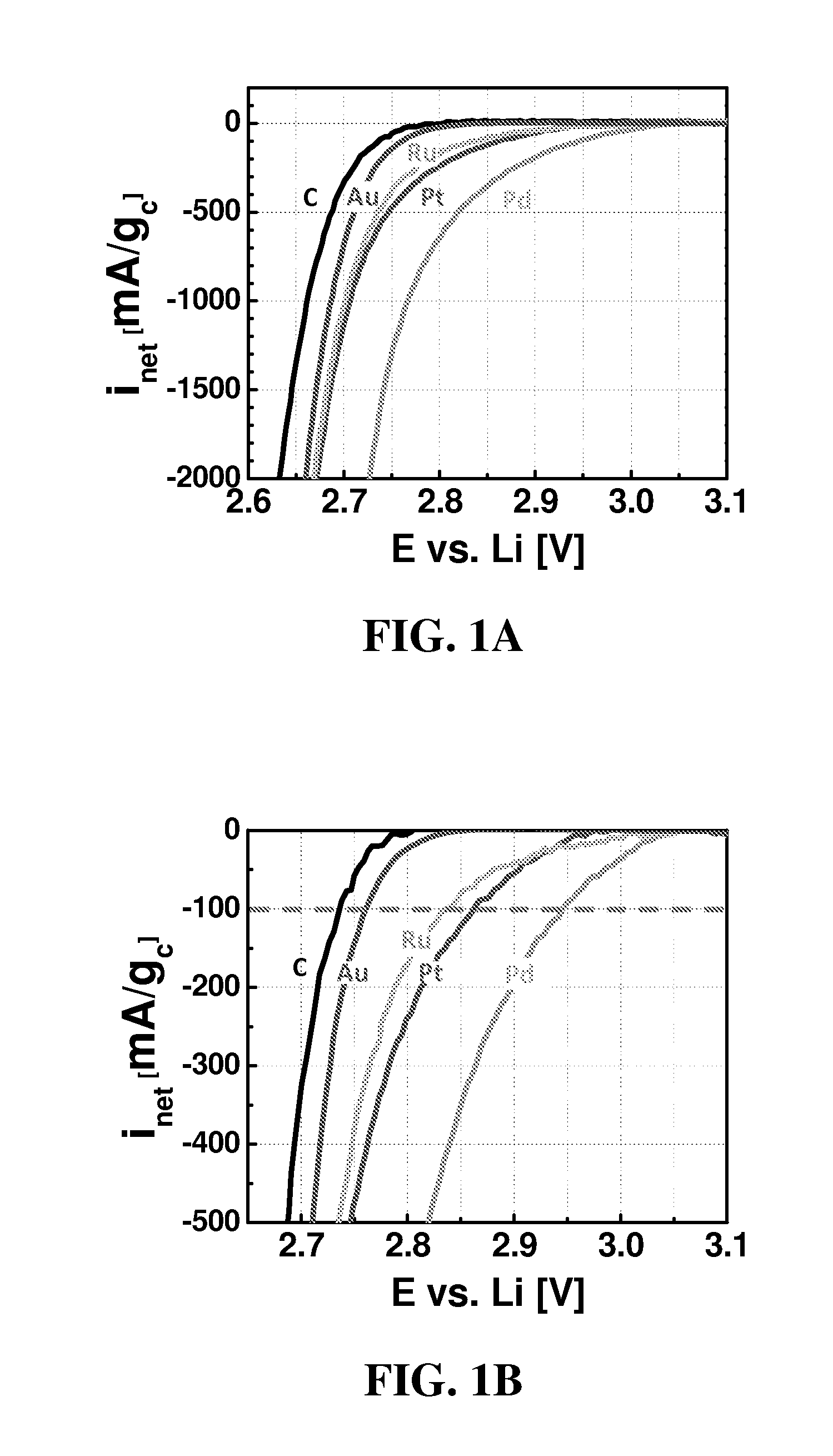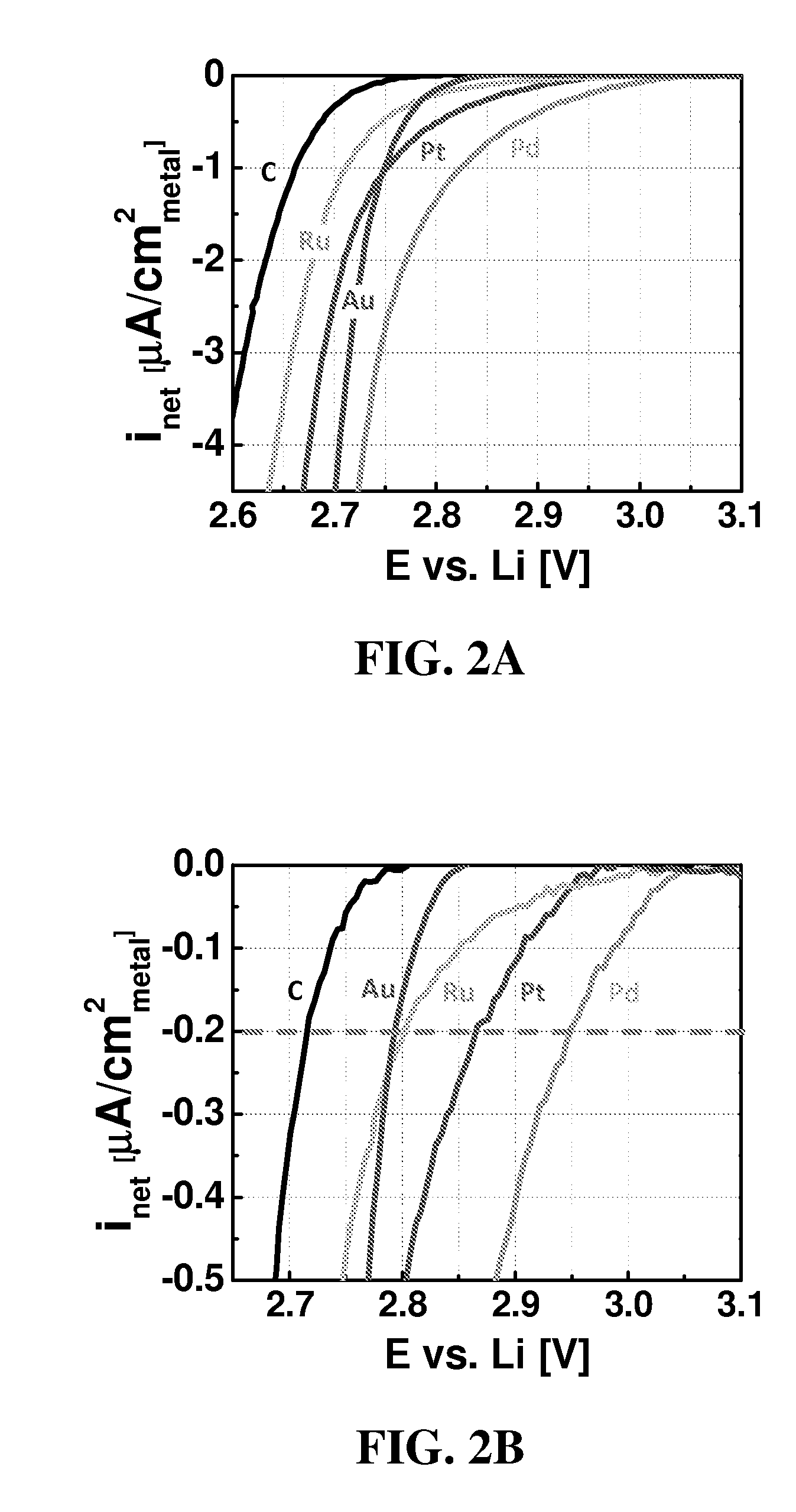Catalysts for oxygen reduction and evolution in metal-air electrochemical cells
a technology of electrochemical cells and catalysts, applied in the field of chemical catalysis and electrochemical technology, can solve the problems of limiting the practical application of lithium-air batteries, and affecting the reaction efficiency of lithium-air batteries
- Summary
- Abstract
- Description
- Claims
- Application Information
AI Technical Summary
Benefits of technology
Problems solved by technology
Method used
Image
Examples
examples
[0080]The following examples are provided to illustrate some embodiments of the invention. The examples are not intended to limit the scope of any particular embodiment(s) utilized.
Rotating Disk Electrode Experiments
[0081]All experiments were conducted in 0.1 M LiClO4 in DME electrolyte, from Novolyte, USA (all <20 ppmH2O) at room temperature.
[0082]Catalyst thin films and three-electrode cells were prepared according to the following for each of Pd, Pt, Au, Ru, and C. Glassy carbon disks (0.196 cm2 disks; Pine, USA) were polished to a 0.05 μm minor-finish before each experiment. Thin films of pure Vulcan XC-72 or 40 wt % [catalyst] / Vulcan (i.e., 40 wt % Pd / Vulcan, 40 wt % Pt / Vulcan, 40 wt % Au / Vulcan, and 40 wt % Ru / Vulcan) were prepared by drop-casting catalyst inks with a Nafion / carbon weight ratio of 0.5 / 1 onto a glassy carbon disk, yielding carbon loadings ranging from 0.05 mgcarbon / cm2disk. The catalyst inks were composed of Vulcan or [catalyst] / Vulcan, lithiated Nafion (LITHio...
PUM
| Property | Measurement | Unit |
|---|---|---|
| Fraction | aaaaa | aaaaa |
| Fraction | aaaaa | aaaaa |
| Current | aaaaa | aaaaa |
Abstract
Description
Claims
Application Information
 Login to View More
Login to View More - R&D
- Intellectual Property
- Life Sciences
- Materials
- Tech Scout
- Unparalleled Data Quality
- Higher Quality Content
- 60% Fewer Hallucinations
Browse by: Latest US Patents, China's latest patents, Technical Efficacy Thesaurus, Application Domain, Technology Topic, Popular Technical Reports.
© 2025 PatSnap. All rights reserved.Legal|Privacy policy|Modern Slavery Act Transparency Statement|Sitemap|About US| Contact US: help@patsnap.com



